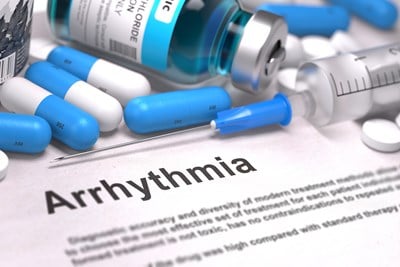Bradycardia is an extremely low heart rate. Although a pulse of less than 60 beats per minute is normal for very healthy or athletic adults, for other people it can be a serious health risk that must be monitored. When the pulse is too slow, not enough oxygen-rich blood gets sent to the parts of the body that need it, resulting in a series of symptoms caused by a lack of oxygen. Physical symptoms of bradycardia include:
- Weakness, dizziness, or fainting
- Chest pain
- Difficulty breathing
- Tiredness, especially during physical activity
The brain can be affected by this lack of oxygen as well. People with bradycardia may experience confusion or have difficulty remembering things.
Bradycardia Causes
A variety of things may result in bradycardia. Something disrupts the electrical signals, so that they do not pass as quickly as they should. These causes may include damage to or infection of heart tissue from age or disease, high blood pressure, heart surgery complications, or congenital heart defects. Issues in other parts of the body may also contribute to the disorder. Hypothyroidism, unbalanced electrolytes (which are necessary for carrying the signal), sleep apnea, inflammatory diseases, or hemochromatosis (too much iron in the organs) can all be factors. Additionally, some medications may cause the heart rate to slacken.
Bradycardia Diagnosis
If you have noticed symptoms of bradycardia, it is important to visit a doctor for a proper diagnosis. Diagnosing bradycardia not only requires examining the patient and patient’s family medical history, but also a series of tests to determine if bradycardia is ocurring, as well as what is causing it. Blood tests are generally necessary as well, as they can find conditions that may causing bradycardia (such as hypothyroidism). The most common method of actually diagnosing bradycardia is the use of an electrocardiogram, or ECG or EKG.
Bradycardia Treatment
Since each case of bradycardia is different, so too is the treatment method. Which course of action to take depends largely on where the electrical impulses are being interrupted, how extremely they are being interrupted, and why they are being interrupted. When an underlying condition is causing the problem, treating that condition is the first step. If a particular prescription is the culprit, changing medication may solve the problem. In instances of severe symptoms that are interfering with health and the quality of life, doctors may insert a pacemaker, which watches the pulse for abnormal rates and corrects them by emitting its own electrical impulse when the heartbeat goes awry.



